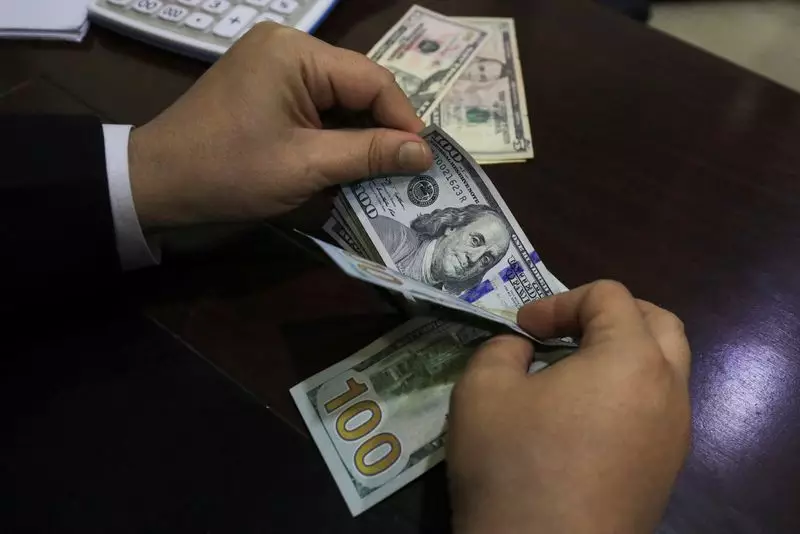In recent trading sessions, the U.S. dollar found itself in a precarious position, hovering near a one-week low against its major counterparts. This decline was largely driven by speculation surrounding the incoming administration of President-elect Donald Trump and its proposed tariff policies. As markets grapple with the implications of these tariffs, traders are attempting to decipher the actual magnitude of changes that may come to the U.S. economy, particularly in relation to national security considerations.
Recent reports indicated that Trump’s advisors were contemplating a more selective approach to tariffs, applying them predominantly to sectors deemed crucial to national or economic security rather than imposing sweeping measures across the board. This revelation led to a slide in the dollar’s value against other currencies, particularly the euro and the British pound. However, a subsequent denial from Trump on his Truth Social platform helped stabilize the dollar somewhat, leading to an uptick in its value.
The U.S. dollar index, a measure of the greenback’s performance against a basket of major currencies including the euro and sterling, experienced fluctuations amidst these developments. After sinking to 107.74—its lowest point since late December—the index managed to recover slightly, reaching 108.38. This volatility reflects traders’ heightened sensitivity to news regarding Trump’s policies and their potential impact on overall U.S. economic growth.
Analysts point out that Trump’s initially proposed universal tariffs of 10-20% were ambitious but perhaps unrealistic. As such, the narrative presented by the Washington Post regarding a shift in approach towards tariffs has resonated with investors. According to Chris Weston, head of research at Pepperstone, the market is currently apprehensive about Trump’s ability to maintain credibility within trade negotiations if the reality shifts towards a less aggressive stance on tariffs.
In the context of the Eurozone, the euro showed a slight decline to $1.03795 after having peaked at a week-high of $1.0437. This fluctuation underscores the eurozone’s vulnerability to the potential consequences of U.S. tariff policies. Similarly, the British pound also wrestled with fluctuations, slipping slightly to $1.125085 following its ascent to $1.2550 in previous sessions. The interdependencies of these economies with the U.S. mean that any shifts in trade policy will reverberate across global markets.
The Yen and Canadian Dollar: Unique Dynamics
Against the Japanese yen, the dollar showed strength, rising to 158.23, the highest it has been since mid-July. This rise can be attributed to increasing U.S. Treasury yields, which tend to bolster the dollar’s appeal to investors. The fluctuations against the Canadian dollar were more pronounced, with the greenback inching up to C$1.4345 after a notable drop in prior trading sessions, reflecting instability amidst political developments in Canada, including Prime Minister Justin Trudeau’s impending resignation.
Kyle Rodda, a senior financial market analyst, highlighted the market’s interpretation of Trudeau’s announcement, suggesting that local traders believe the Canadian economy may experience positive momentum in the absence of his leadership. This ongoing evaluation of political leadership and its economic implications is testament to how intertwined political and financial markets can be.
The Cryptocurrency Angle
Meanwhile, in the realm of cryptocurrencies, Bitcoin’s recent performance saw it gaining approximately 0.9% to $102,560, marking its highest trading levels since December. The cryptocurrency market often reacts to broader economic sentiments, and Bitcoin’s rise reflects a flight of interest as traditional currencies experience volatility. The decentralized digital currency provides an alternative investment avenue, particularly during uncertain economic times.
In a world where currency values are keenly affected by political tides, the U.S. dollar’s fluctuations highlight the interconnectedness of trade policies, political decisions, and economic outcomes. As traders navigate these choppy waters of uncertainty, the anticipation surrounding Trump’s tariffs will undoubtedly play a vital role in shaping the dollar’s course. The coming weeks will be crucial for understanding not only the dollar’s trajectory but also the broader implications for global markets as they respond to U.S. policy direction.

